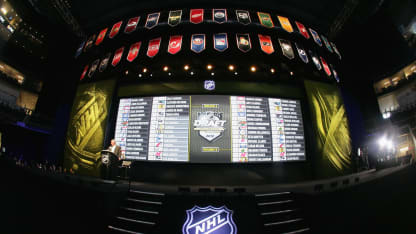The math of it doesn't seem to add up.
Except that it does.
The Vegas Golden Knights will select 30 players in the NHL Expansion Draft. But NHL rosters consist of only 23 players.
Based on this premise, that arithmetic of how the Golden Knights will construct the team's roster doesn't seem to compute.
After all, if our team selects 30 players, but can only carry 23 on our roster, what happens to the other seven players?
Likewise, if our team signs free agents, wouldn't that muddy the waters even further? Where if the Golden Knights sign six free agents, for example, and then have 36 players, wouldn't the limitations of a 23-man roster misplace 13 of our players?
Here are a few things to keep in mind as the Golden Knights participate in the Expansion Draft this June about how the relationship works between the amount of players we select and the amount we carry on our roster.
Expansion Draft Primer: Rules Will Breed Competition
How the Expansion Draft rules will produce a hyper-intense training camp this fall

© Dave Sandford/Getty Images


















